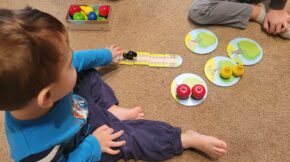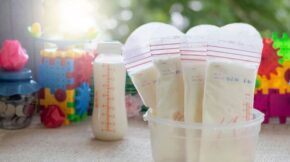Can Warmed Breast Milk Be Refrigerated Again: Unlocking Mystery
Share
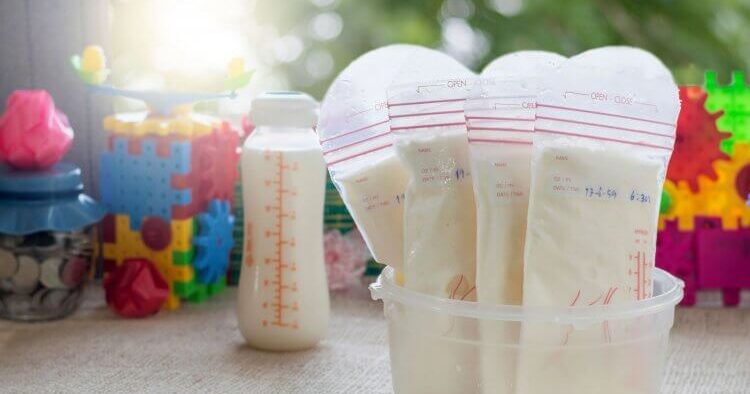
As we all know, newborn babies cannot be fed the food that we eat due to their patiently growing digestive systems and teeth. At this age, they are majorly fed with breast milk. It is easy to digest and suitable for any baby’s growth. It helps their body’s development by supplying the required nutrients. It is the only source of nutrients at that age for your children.
The mother is occupied with the baby’s care 24/7 since she is pregnant. Most mothers do not get to take a break from this tedious and highly demanding task of motherhood for a long time, even after the child’s birth. In the case of working moms, the maternity leaves come to an end and they have to go for work without being ready for it.
In such cases, they are required to find alternatives to breastfeeding when they are not present around the baby. It can begin with finding ways of storing breast milk for a few hours.
Storing Breast Milk
The babies receive all their required daily nutrients from the breast milk. They get all that is required from their little consumption of milk. So when it comes to the storage of milk, one has to ensure that it is preserved well without any loss of nutrients in them.
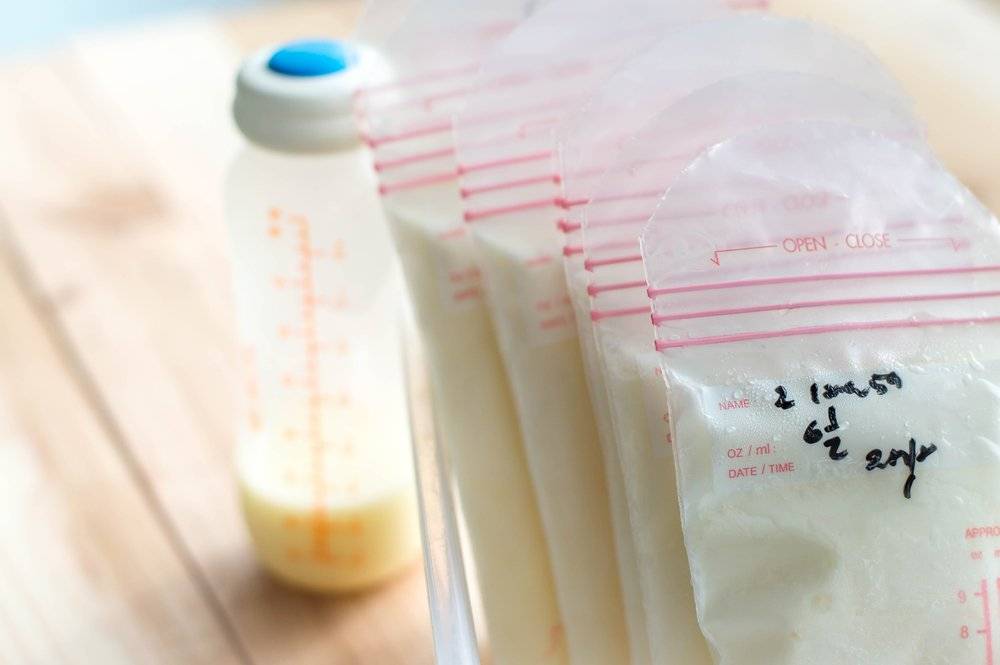
Also, with the weak and developing immunity of the babies, they are likely to get affected easily by bacteria that can be formed around the storage of the milk. So this raises concerns about milk storage, making it difficult for mothers to stay away from babies when it is required. It is likely to result in the child staying hungry for long hours, which is not an option that can be opted for by a mother. There are a few ways adopted by mothers to avoid the potential contamination of breast milk. But the question is, can warmed breast milk be refrigerated again? So, let’s explore more about it.
Can Warm Breast Milk Be Refrigerated Again?
Yes, it is completely fine to store refrigerated breast milk. Just make sure that the duration between these two is not very long. It should be as close as 2 hours from the first warming. So you can use these two hours to feed your baby once the breast milk comes to room temperature or is warmed. If you are left with any breast milk after this two-hour duration, it must be eliminated even if it was put in the fridge.
When you refrigerate the milk, it slows down the growth of bacteria in it. So it is better to keep it in the fridge instead of keeping it at room temperature, even for the two-hour duration. If you’re breastfeeding and going back to work or looking for more flexibility, you may consider using a breast pump.
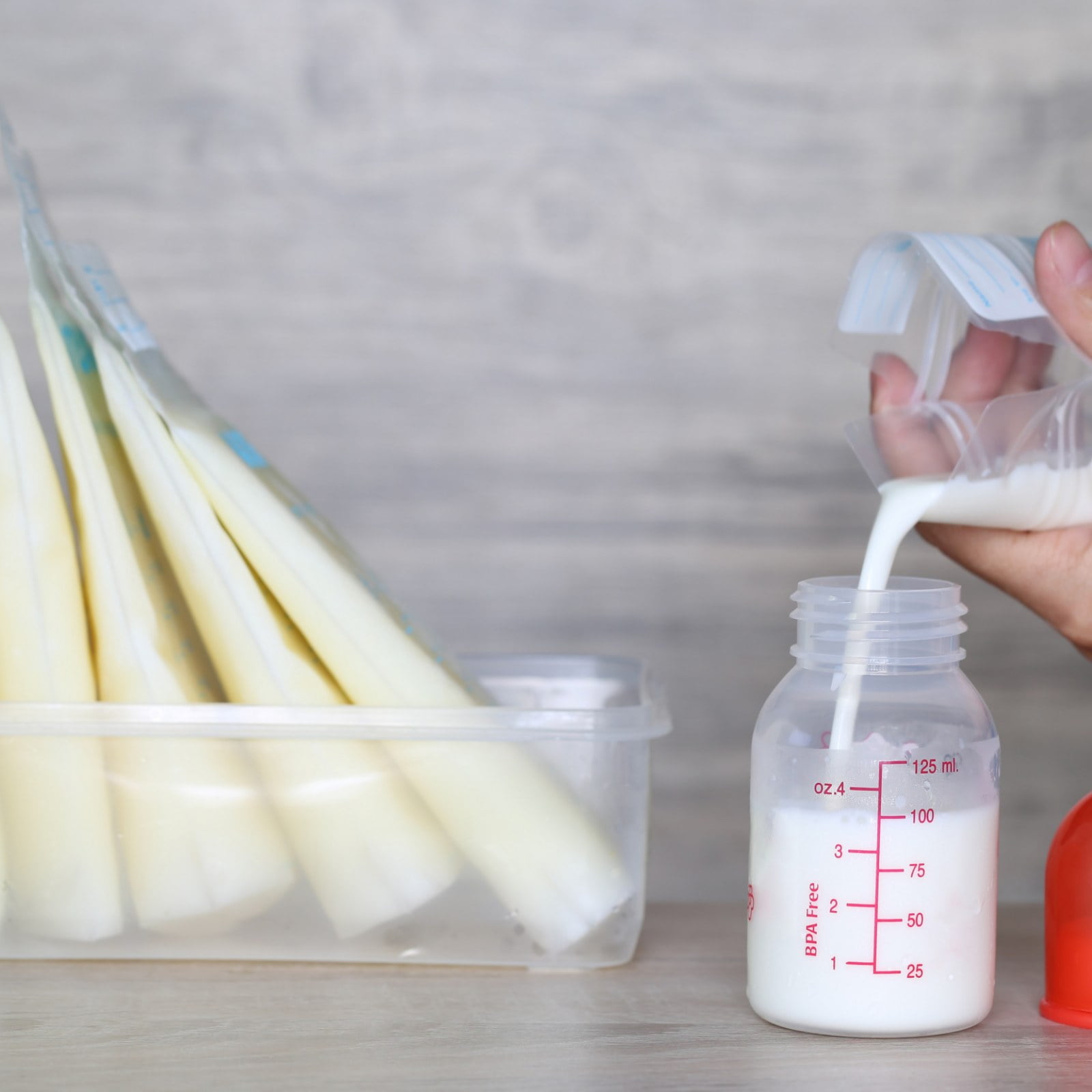
Breakdown of Nutrients in Breast Milk when Warmed and Refrigerated Again
Breast milk is the easiest way to ensure the high-density nutrient intake of your baby, especially for a newborn, as there is no other option for feeding them. This milk is full of live cells, useful bacteria for the baby, and required antibodies. As the baby grows, nature plays its part and modifies the breast milk to cater requirements of the growing baby.
Hence, it won’t be the same milk as when your kid was newly born. By the time your baby is one month old or more, the breast milk evolves into a protein-rich meal.
It supplies all the necessary hormones, minerals, nutrients, and other things required by the baby for effective brain and body development. The milk must not be warmed too many times and must be consumed within two hours after warming.
The contamination can also be caused due to your baby’s mouth and hence too much reuse must be avoided.
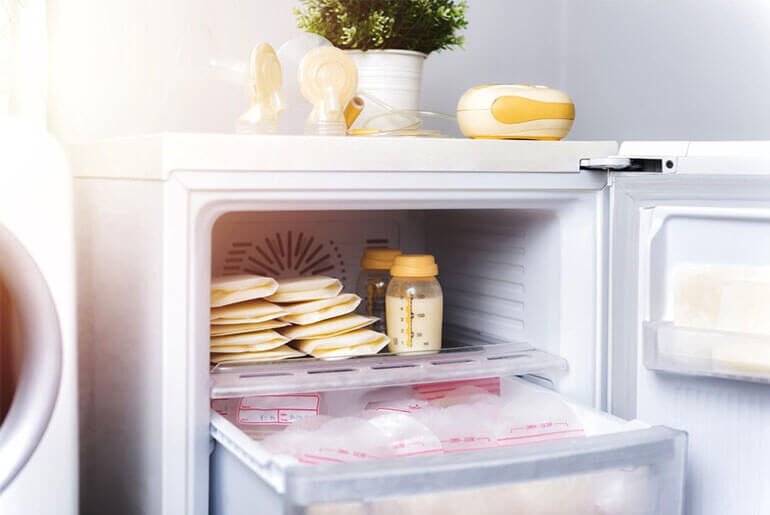
Reheating the Milk
When it comes to reheating the milk, ensure to use the oldest collection of stored milk to do so. Avoid giving too-old milk to the children unless it is properly stored, as it is largely prone to the bacteria we talked about.
If you have kept the breast milk in the freezer for storage, and it is frozen, keep it outside for some time and let it turn into a liquid state before heating. If you want to melt it quickly, you can use the breast milk bottle and place it in a pot full of water. Then you can make the milk warm but ensure that it does not become too hot.
One way of heating it is to place the bottle in high-temperature water that can warm up the milk. Also, keep an eye on it whenever you are heating it to avoid it being too hot for the baby.
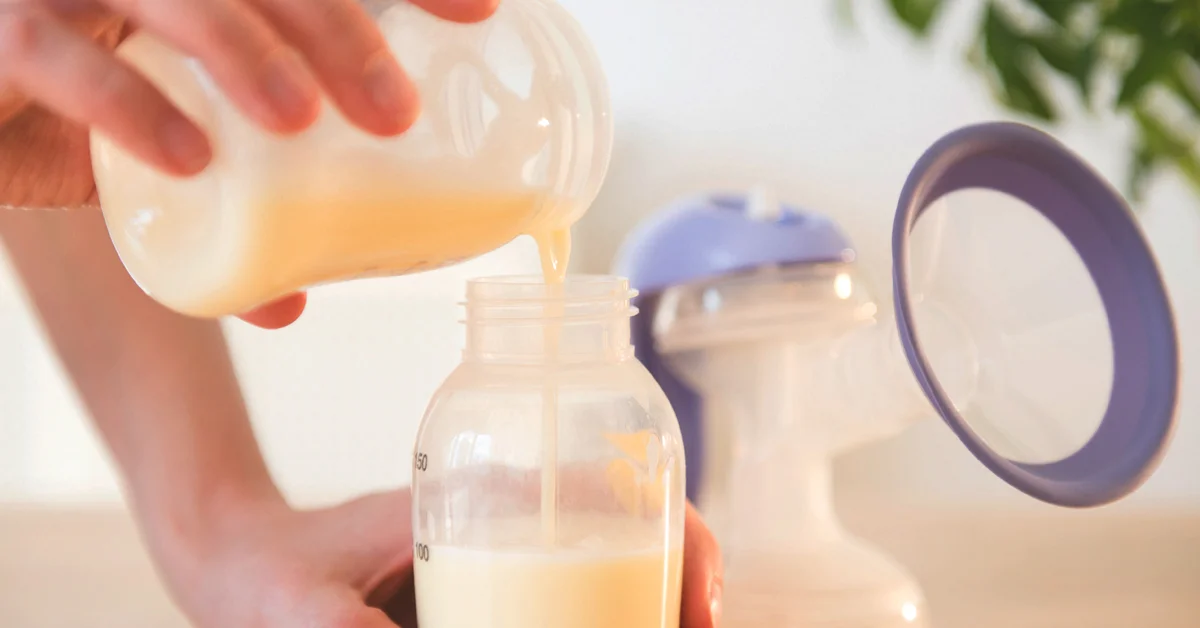
If you don’t freeze the milk and just refrigerate it, it won’t be frozen but sure as cold as ice. In this can, you can bring its temperature up by keeping it aside for a few hours before warming and feeding the baby. But if you need it quickly, you can heat a pot of water on a gas or stove, and you can put the bottle of baby milk in the boiling water. This ensures to bring the temperature up within a few minutes, and it will be ready for your child.
One of the important things to remember when it comes to heating stored milk is that you must not heat it on a stove as it is likely to kill the nutrients in the milk. Also, if you don’t pay attention, it can burn the milk.
When it comes to heating the milk, ensure that you are not heating a small amount of it. Heat large amounts as needed by the baby for one meal in one go. If you think that the milk is not too cold, check it with the baby, as some babies enjoy cool milk too.
Apart from not using the stove, the microwave must also not be used to heat breast milk. As per a few researches, microwave heating of milk is likely to reduce its nutritional value. All these options are easy to heat but not very beneficial for the baby. Microwaving also brings the risk of scalding because of the chemicals and radiation released by it.
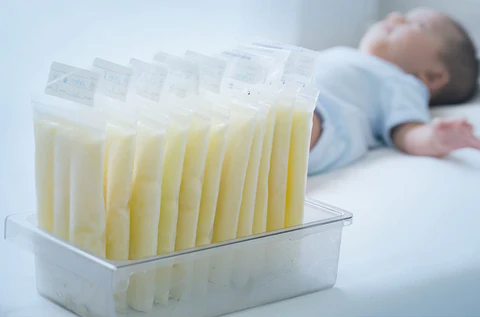
When you reheat the refrigerated breast milk, it is likely to form a thin layer on the top and may be seen as slightly watery at the bottom of the bottle. This doesn’t mean that the milk is spoilt or problematic, it is just fine as before. However, in such cases, ensure to swirl the container to evenly distribute the cream before feeding the baby.
You may also feel that this milk has a soapy smell or taste after heating, but it doesn’t mean you have to worry. It is caused by the milk fats that break down after heating.
It is still safe to feed the baby. However, if it tastes too weird and your baby is too bright to know the difference, they might not want to drink it.
What Kind of Container Should Be Used to Store Breast Milk?
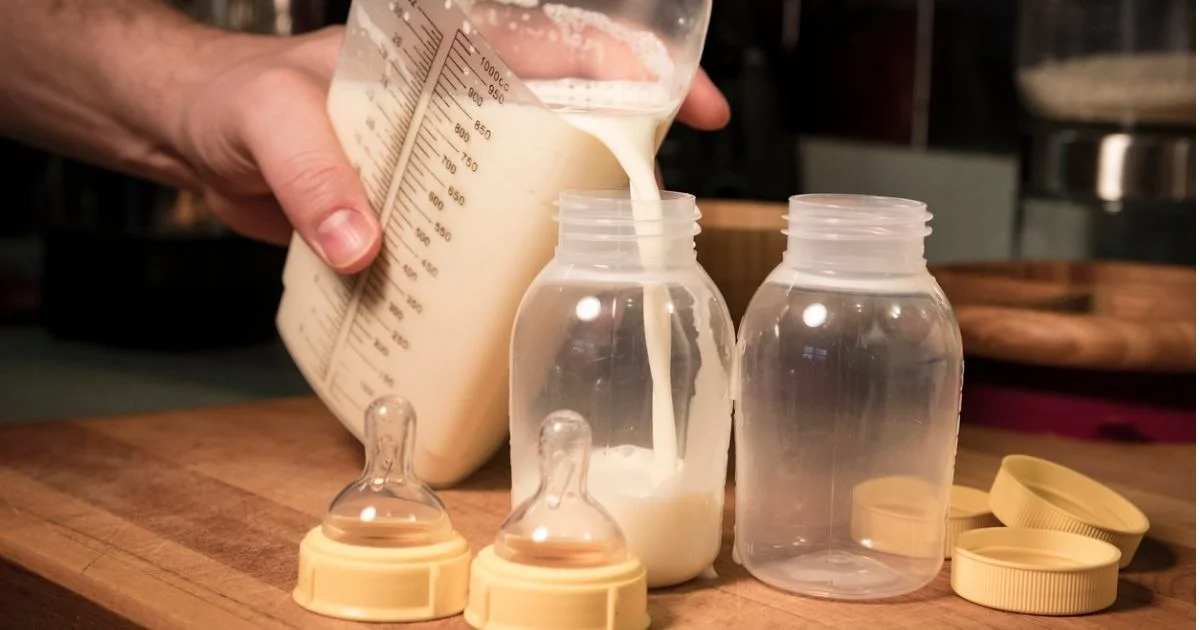
When it comes to breast milk, hygiene is an important aspect that should be taken care of. You can start by washing off your hands with soap and water before expressing breast milk. You can use a breast pump to express it but ensure that it is clean. The milk must be stored in clean containers.
You can use plastic containers that are made for storing breast milk or just use capped food-grade glass containers. You can also use breastmilk bags for long-term storage of the milk in the freezer.
Avoid using any household plastic bottles or containers for milk storage to ensure high safety. For best practice, you can use a plastic container that is made of the chemical bisphenol A (BPA).
What’s the Best Way to Store Expressed Breast Milk?

The best way to store breast milk is by making use of a waterproof container. You can keep them in the refrigerator with labels stating the day of storage to avoid using them too late or for using the old one first. If you keep your child in a baby care center and you are handing the breast milk to the manager, ensure to add your baby’s name and some identification mark on it for easy access.
You can keep these bottles at the back of the fridge or freezer, where they are exposed to low temperatures. If the place does not give you access to the refrigerator, you may use an insulated cooler with ice packs for temporary storage of the milk.
Being a new mom, you may not be sure about the amount of milk that will be required by your child in the time duration you are away from them. You can begin by expressing and storing 60 to 120 ml of milk and then increasing it based on your baby’s needs.
Based on how many feedings your baby will need during the day, fill individual containers for each feeding. If you expect some delays or emergencies, keep small portions of milk handy.
Ensure that you don’t fill up the containers completely before freezing, as milk expands after being exposed to lower temperatures and can result in the breaking of the bottle.
Can Freshly Expressed Breast Milk Be Added to Already Stored Milk?
Here’s some good news. Yes, you can add freshly expressed breast milk to the frozen or refrigerated part. However, you must cool the freshly expressed breast milk in the fridge or in some other way before adding it to the previous batch.
How Long Does Express Breast Milk, Keep?
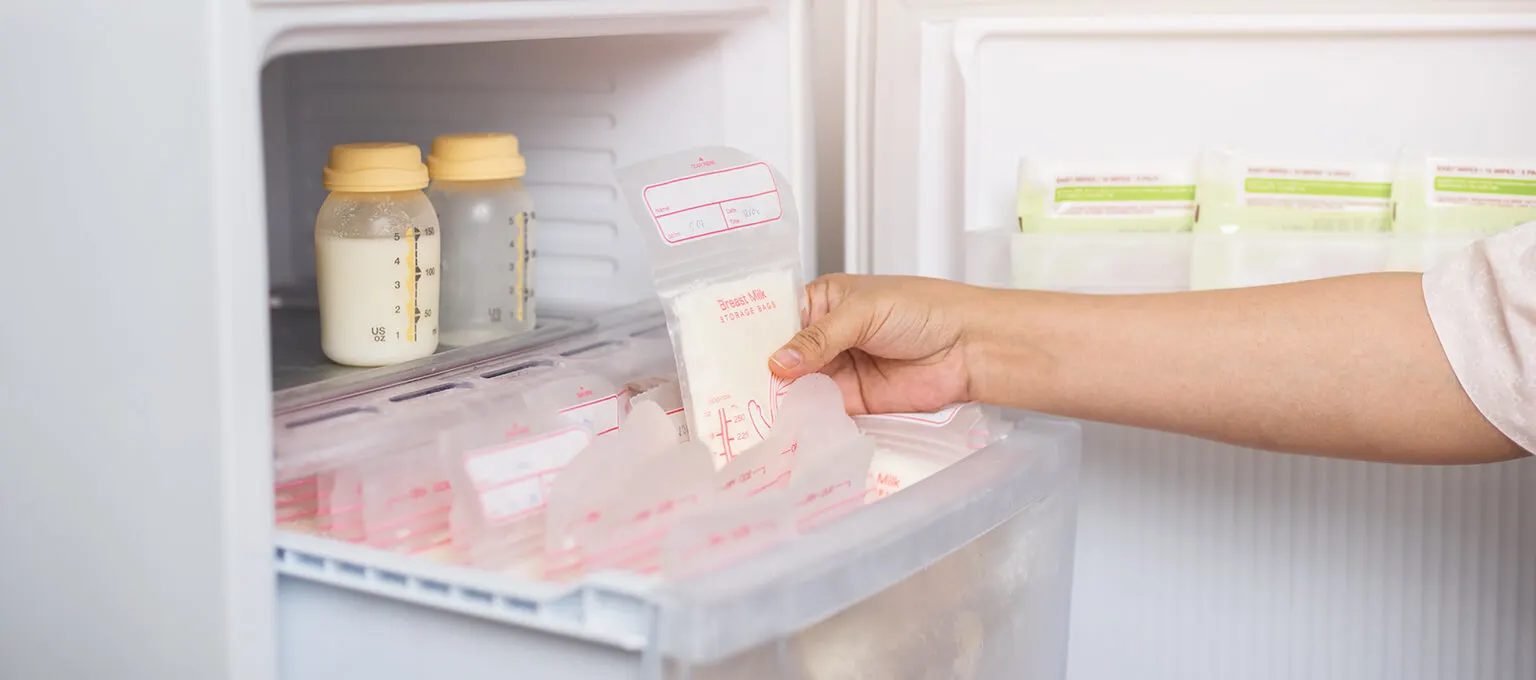
The main factor that impacts the duration of breast milk keeping fine is your way of storing it. Consider the following factors when it comes to storage.
- The best way to store breast milk is by storing it in the refrigerator. You can store your freshly expressed breast milk in the back of the fridge for around four days. However, it is best to freeze the milk after three days if yet not in use, or just use it before the three days from storage.
- You can also use insulated coolers for storing breast milk using ice packs. But it is not recommended to use this milk for more than one day after expressing it.
- Let’s not ignore that breast milk can stay well up to six hours at room temperature after it is expressed. But the best suggestion is to keep it in the fridge to avoid the growth of bacteria on it. If the room is warm, it must be consumed or refrigerated within four hours.
- Freshly expressed breast milk can be stored in the freezer for about 12 months. This is the best way of storing milk if you want it to be going for a long duration. But you can make the best use of the milk if it is used within 6 months after freezing.
However, there is one issue with storing breast milk for a long duration, even in the refrigerator and freezer. The longer you store it, the greater it loses vitamin C from its nutrients. The storage guidelines can be different for babies that are unwell or going through exceptional conditions.
Conclusion
Today’s busy schedules and fast lives require mothers to have certain flexibility when it comes to handling or feeding their babies. The main issue comes when the baby is young and is yet not introduced to eating our regular food. Hence, breast milk must be stored and used well by ensuring the least loss of nutrients in the process.
Refrigeration is the best way to avoid the milk being exposed to bacteria that is harmful to the baby. If it must be stored for a longer duration, you can freeze the milk and then use it.
Tell us about your breastfeeding experiences and milk storage hacks in the comments section.










